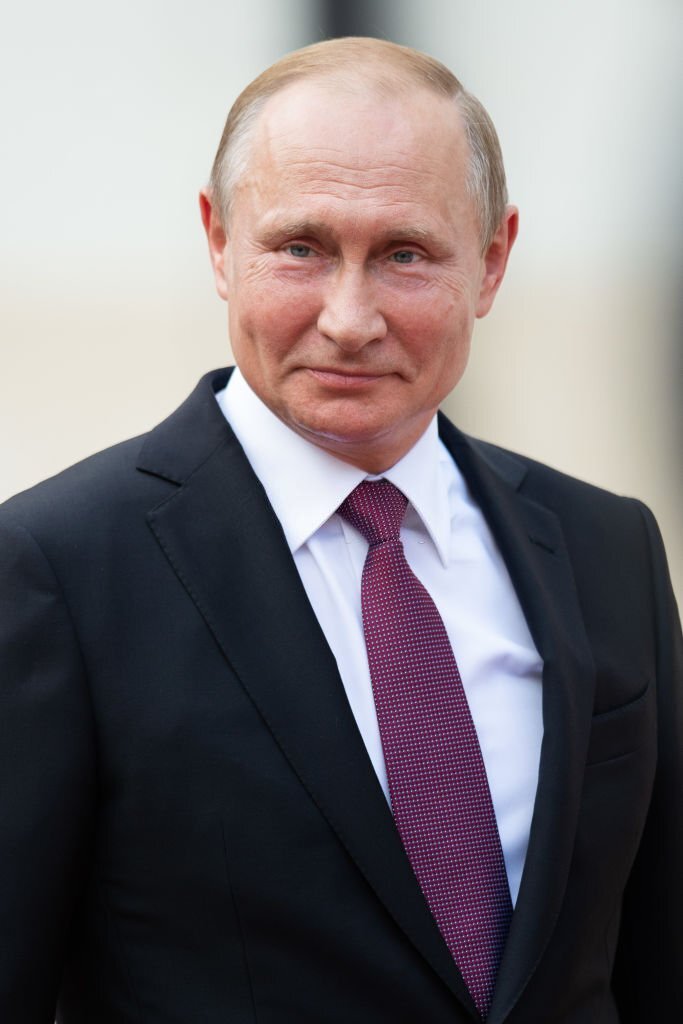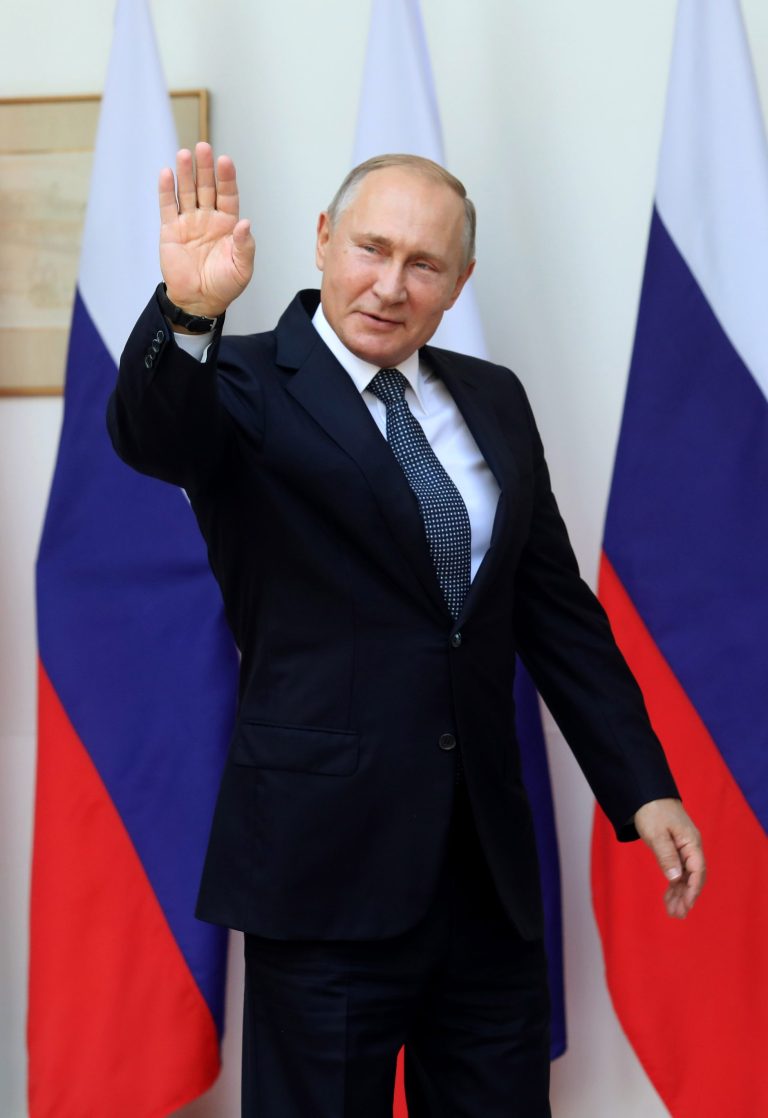Vladimir Putin's Height: Revealing The Truth In CM + Facts
Does height truly dictate power? In an era defined by global political chessboard, Vladimir Putin stands as a figure of unparalleled influence. His strategic genius is unquestionable, his persona meticulously crafted, and his impact on world affairs undeniable. But beyond the headlines and geopolitical maneuvers, a persistent curiosity lingers: how tall is he? Indeed, exploring Vladimir Putin's height in cm offers a revealing lens through which we can examine the broader interplay between physical stature, public perception, and political authority.
While the height of a political leader might seem like a superficial detail, it's undeniable that physical presence can significantly shape how they are perceived. Historically, taller figures have been associated with dominance and command. In Vladimir Putin's case, particularly when he is seen alongside taller counterparts on the international stage, questions about his height are amplified. This exploration aims to shed light on Vladimir Putin's height, delving into the broader context of his life and career, and how his physical stature has been interpreted in relation to his formidable political standing.
| Detail | Information |
|---|---|
| Full Name | Vladimir Vladimirovich Putin |
| Date of Birth | October 7, 1952 |
| Place of Birth | Leningrad (now Saint Petersburg), Russia |
| Education | Leningrad State University (Law Degree, 1975) |
| Career |
|
| Political Positions | President of Russia, Former Prime Minister |
| Height | Approximately 170 cm (5 ft 7 in) |
| Official Website | Kremlin.ru (English Version) |
Born in Leningrad on October 7, 1952, Vladimir Vladimirovich Putin's journey from a humble background to the pinnacle of global power is a story of ambition, strategic acumen, and unwavering determination. He received his law degree from Leningrad State University in 1975, a pivotal moment that paved the way for his entry into the ranks of the KGB. For sixteen years, he served as an intelligence officer, honing skills that would later prove invaluable in his ascent through the political landscape. Putin's transition into politics began in 1991 when he became an advisor to the Mayor of Saint Petersburg. This marked the start of a remarkable trajectory that saw him rise through various influential positions, including Prime Minister and ultimately President of Russia, a role in which he has profoundly shaped the nation's trajectory for over two decades.
- Exploring The Megnut Fanbus What It Is Why Fans Love It
- Who Is Arielle Kebbels Spouse Relationship Amp Privacy
Vladimir Putin's height is frequently cited as being around 170 cm, or approximately 5 feet 7 inches. This places him somewhat below the average height for men in Russia, which typically hovers around 175 cm. However, this has not appeared to be a significant impediment to his political ambitions or the carefully constructed public image that he projects. In numerous photographs and public appearances, he is often seen alongside world leaders who are noticeably taller, which has fueled speculation and curiosity regarding his precise stature over the years. The perceived disparity in height has often been a point of discussion, highlighting how even seemingly minor physical attributes can be subject to intense scrutiny in the world of politics.
Height can wield a subtle yet potent influence on the perception of leadership. When we compare Vladimir Putin's height to that of other prominent figures on the world stage, the dynamics of political imagery become more apparent. Consider the following comparisons:
- Barack Obama: Approximately 185 cm (6 ft 1 in)
- Donald Trump: Approximately 190 cm (6 ft 3 in)
- Emmanuel Macron: Approximately 175 cm (5 ft 9 in)
- Angela Merkel: Approximately 165 cm (5 ft 5 in)
These comparisons illustrate the considerable variation in height among global leaders. While Vladimir Putin may appear shorter in comparison to some, particularly Obama and Trump, his carefully cultivated image of strength and authority has often served to transcend any perceived physical limitations. His interactions with taller leaders are often closely analyzed, with observers looking for clues about power dynamics and negotiating leverage.
- Cote De Pablos Husband All About Diego Serrano Her Love
- Breaking Why Did Aisha Tyler Really Leave Ghost Whisperer The Truth
The importance of a political leader's height can frequently be linked to perceptions of authority and dominance. In Vladimir Putin's instance, his relatively average height does not diminish the commanding image that he has successfully cultivated. Through strategic utilization of body language, carefully orchestrated media appearances, and a consistent portrayal of strength, he has often been depicted as a dominant figure on the world stage. This raises pertinent questions about how physical characteristics, even those as seemingly minor as height, can impact political narratives and shape public perceptions of leadership.
Vladimir Putin has demonstrated a keen understanding of image management, skillfully using his physical presence to project an aura of strength, resilience, and control. He is frequently photographed participating in activities that accentuate a rugged and adventurous persona, such as practicing martial arts, engaging in horseback riding expeditions, and exploring the great outdoors. These carefully curated images play a vital role in shaping public perception, reinforcing the idea that height is just one facet of a leader's overall image. The consistent portrayal of physical prowess helps to counterbalance any perceived disadvantage due to his height, underscoring the importance of strategic image crafting in the realm of politics.
Research has indicated that height can indeed influence perceptions of leadership, with taller individuals often being perceived as more authoritative and competent. However, Vladimir Putin's success in maintaining a powerful and influential presence despite his height suggests that other attributes, such as personality, communication skills, and strategic prowess, can effectively outweigh physical considerations. This leads to a broader discussion about the qualities that truly define effective leadership in the modern era, moving beyond superficial characteristics to focus on the skills and traits that enable leaders to navigate complex challenges and inspire confidence in their constituents.
The art of political communication is, in part, about conveying an image of strength, capability, and control. While a taller stature has historically been associated with these qualities, leaders like Putin demonstrate that these perceptions can be skillfully shaped through other means. His calculated gestures, direct eye contact, and confident demeanor contribute to an overall impression of authority that is not solely reliant on physical height. This carefully constructed image allows him to project an aura of dominance that transcends his actual physical dimensions.
Putin's background in the KGB undoubtedly played a role in his understanding of perception management. The skills he acquired during his years as an intelligence officer, including attention to detail, strategic thinking, and the ability to influence others, have been instrumental in shaping his public persona. He is acutely aware of how his actions, words, and even his appearance are perceived, and he uses this awareness to his advantage. His image is not accidental but rather the result of careful planning and execution, designed to project an image of strength and control.
Beyond his physical appearance, Putin's communication style is also a key component of his image. He tends to be direct, concise, and assertive in his pronouncements, conveying a sense of certainty and decisiveness. His language is often carefully chosen to project strength and resolve, further enhancing the impression of a leader who is firmly in control. This carefully calibrated communication style reinforces his image of authority, making it difficult to perceive him as anything less than a dominant figure.
The Russian leader's engagement in activities that showcase his physical prowess is also a deliberate strategy to enhance his image. Photographs and videos of him engaging in martial arts, hunting, fishing, and other outdoor pursuits project an image of vitality, strength, and resilience. These activities not only convey a sense of physical fitness but also align with traditional masculine ideals, further reinforcing his image as a strong and capable leader. This strategic use of imagery is designed to appeal to a broad segment of the Russian population, as well as project an image of strength to the rest of the world.
The carefully constructed image of Vladimir Putin has been instrumental in his ability to maintain a high level of public support in Russia. By projecting an image of strength, competence, and unwavering commitment to the nation's interests, he has cultivated a strong bond with many Russian citizens. This image has also served to insulate him from criticism and challenges, as it reinforces the perception that he is the only leader capable of guiding Russia through its complex geopolitical landscape.
While the question of Vladimir Putin's height may initially seem trivial, it opens a window into the broader themes of image management, political perception, and the qualities that define effective leadership. Putin's ability to cultivate a powerful and influential presence despite his relatively average height underscores the importance of factors such as personality, communication skills, and strategic acumen. His success demonstrates that physical attributes are not necessarily the determining factor in leadership, and that a carefully constructed image can be just as, if not more, important.
The fascination with Putin's height also highlights the power of visual communication in politics. In a world saturated with images and media, leaders are increasingly judged on their ability to project a certain image to the public. Putin's mastery of image management has been a key factor in his political success, allowing him to cultivate a persona that resonates with a broad audience and reinforces his authority on the world stage. This underscores the increasing importance of visual communication in modern politics, where leaders are constantly being evaluated on their ability to project a compelling and persuasive image.
Ultimately, the question of how tall Vladimir Putin is in cm serves as a reminder that leadership is a complex and multifaceted phenomenon. While physical attributes may play a role in shaping perceptions, they are ultimately less important than qualities such as vision, intelligence, and the ability to inspire and motivate others. Putin's success in maintaining a powerful and influential presence despite his height demonstrates that true leadership transcends physical dimensions and is rooted in the qualities that enable a leader to navigate challenges, inspire confidence, and shape the course of history. The leader has masterfully utilized his image in politics, stands as a potent case study in the interplay between perception and power.
- Who Is Travis Kelces Wife All About Kayla Nicole
- Whoa Zendayas Mother Height The Privacy Puzzle Revealed

How tall is Vladimir Putin? Real Age, Weight, Height in feet

Russian President Vladimir Putin Height G20 World Leaders Height

Vladimir Putin Height How Tall is The President of Russia? Hood MWR